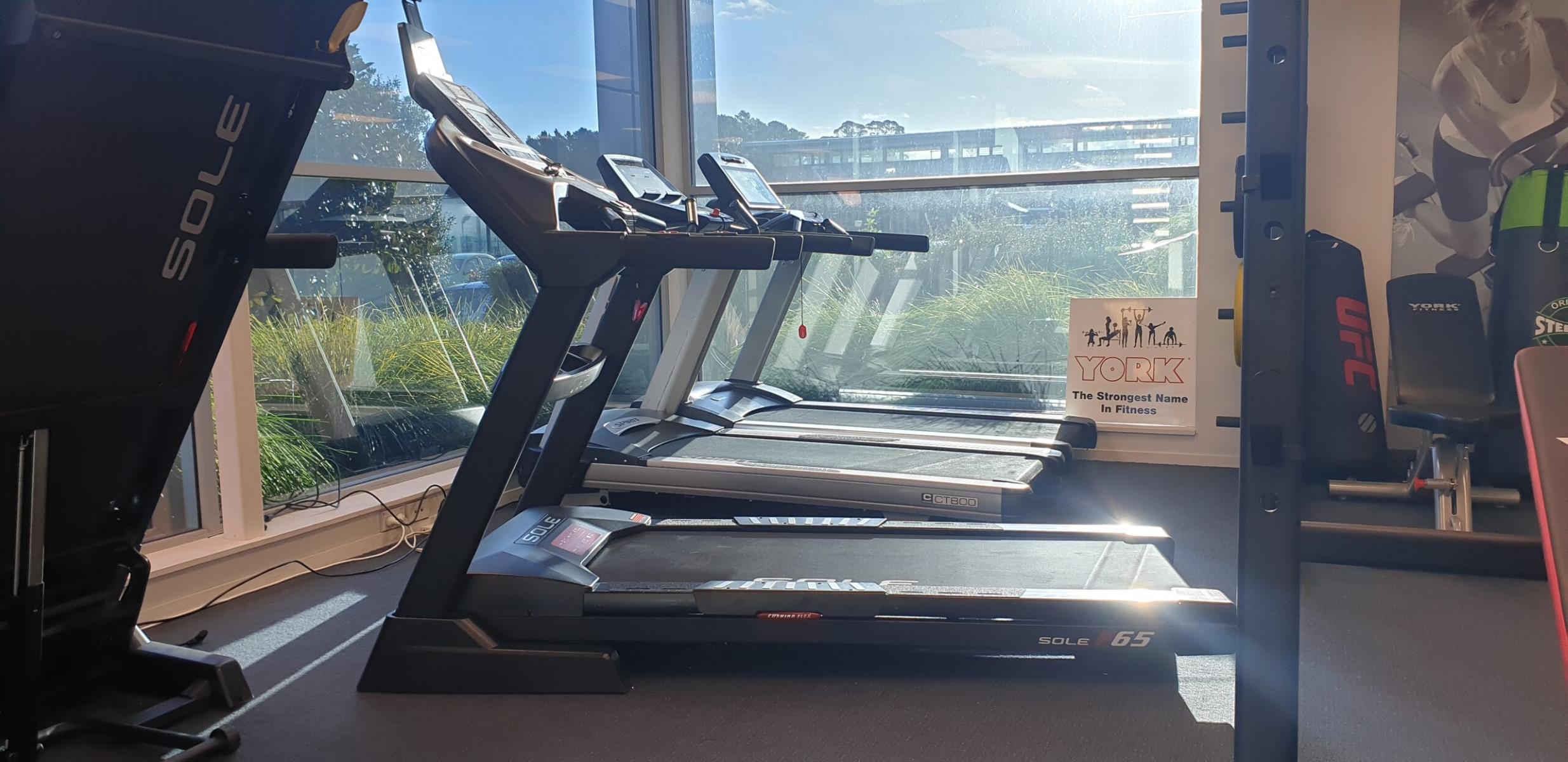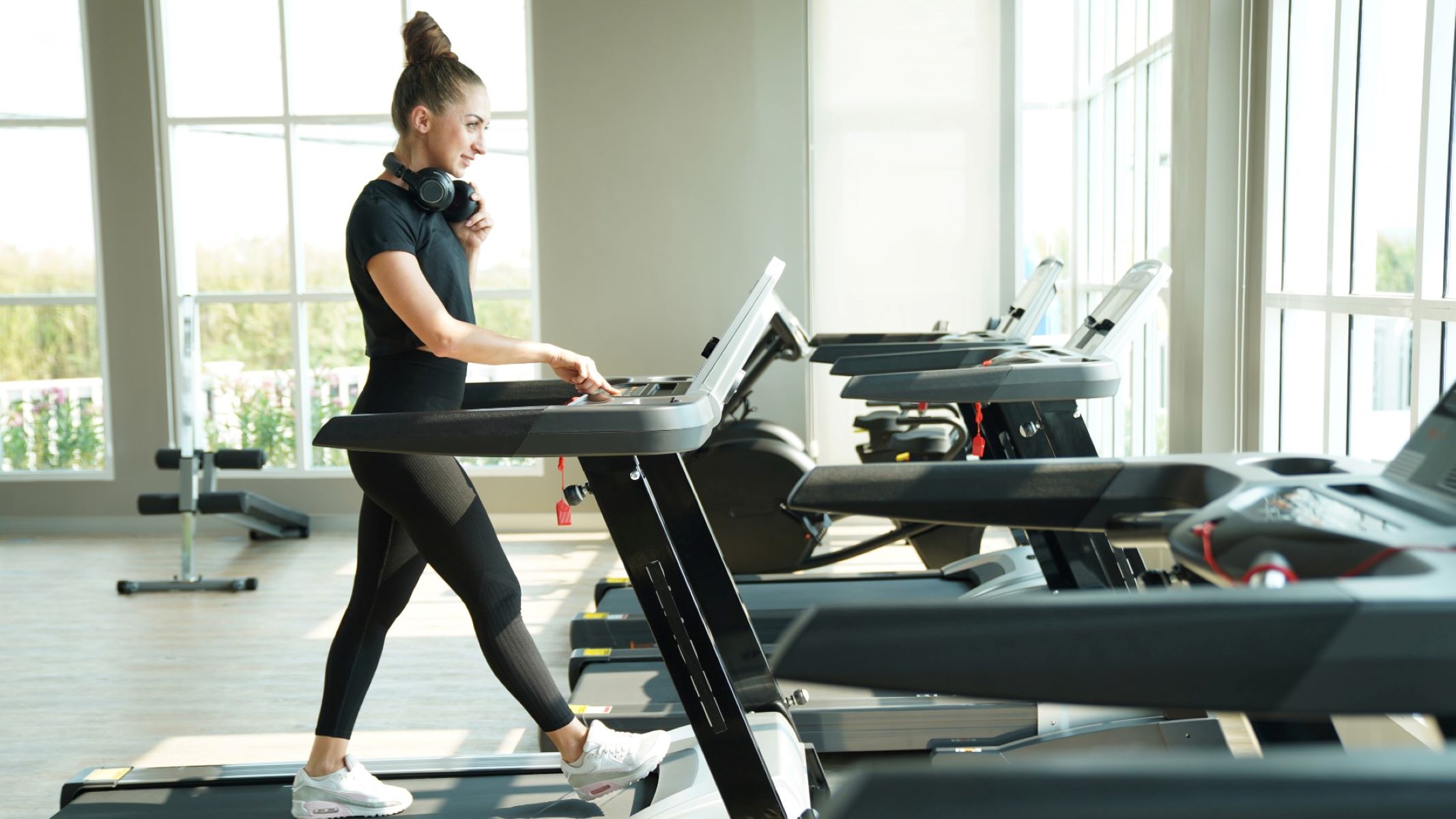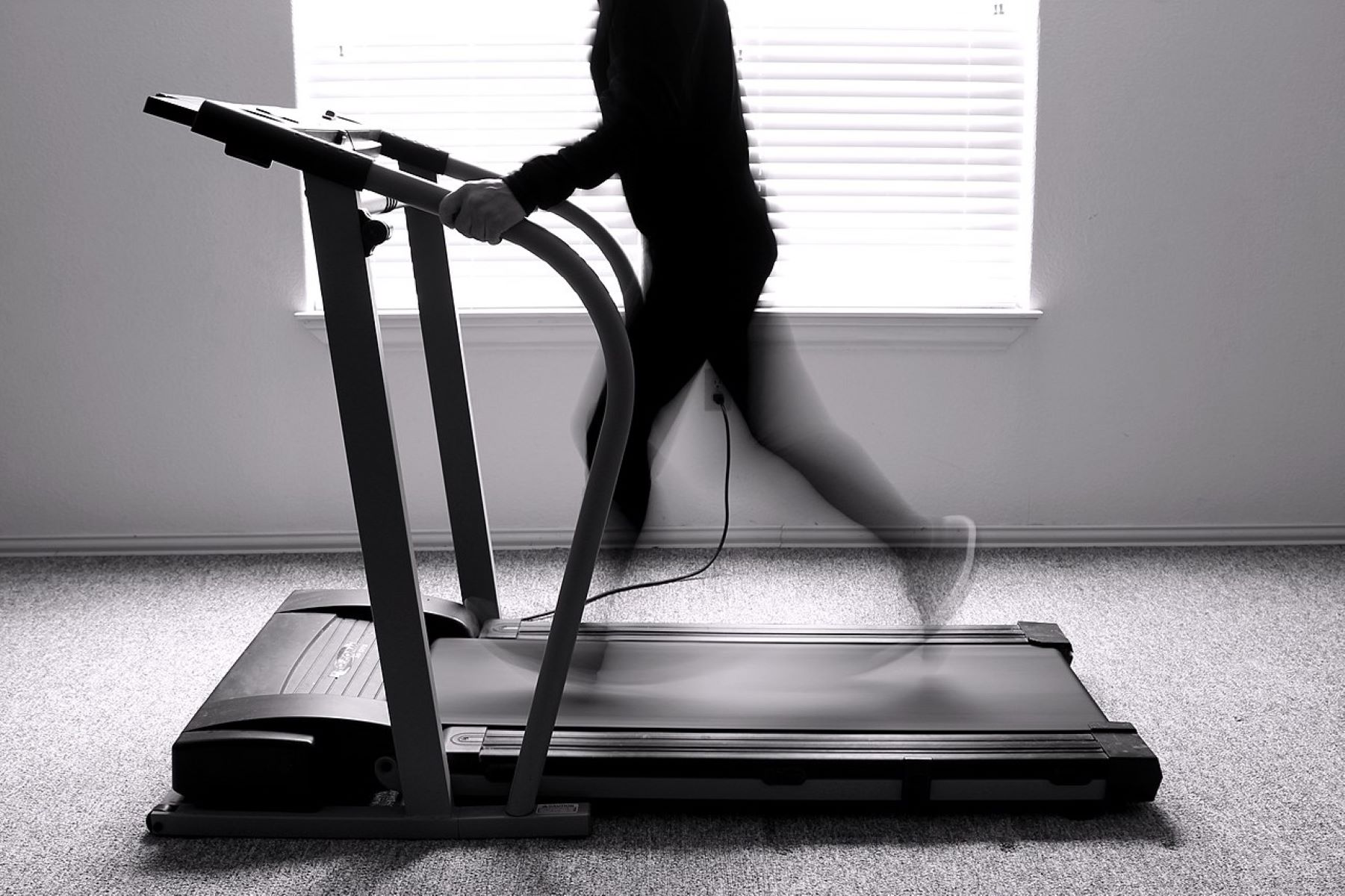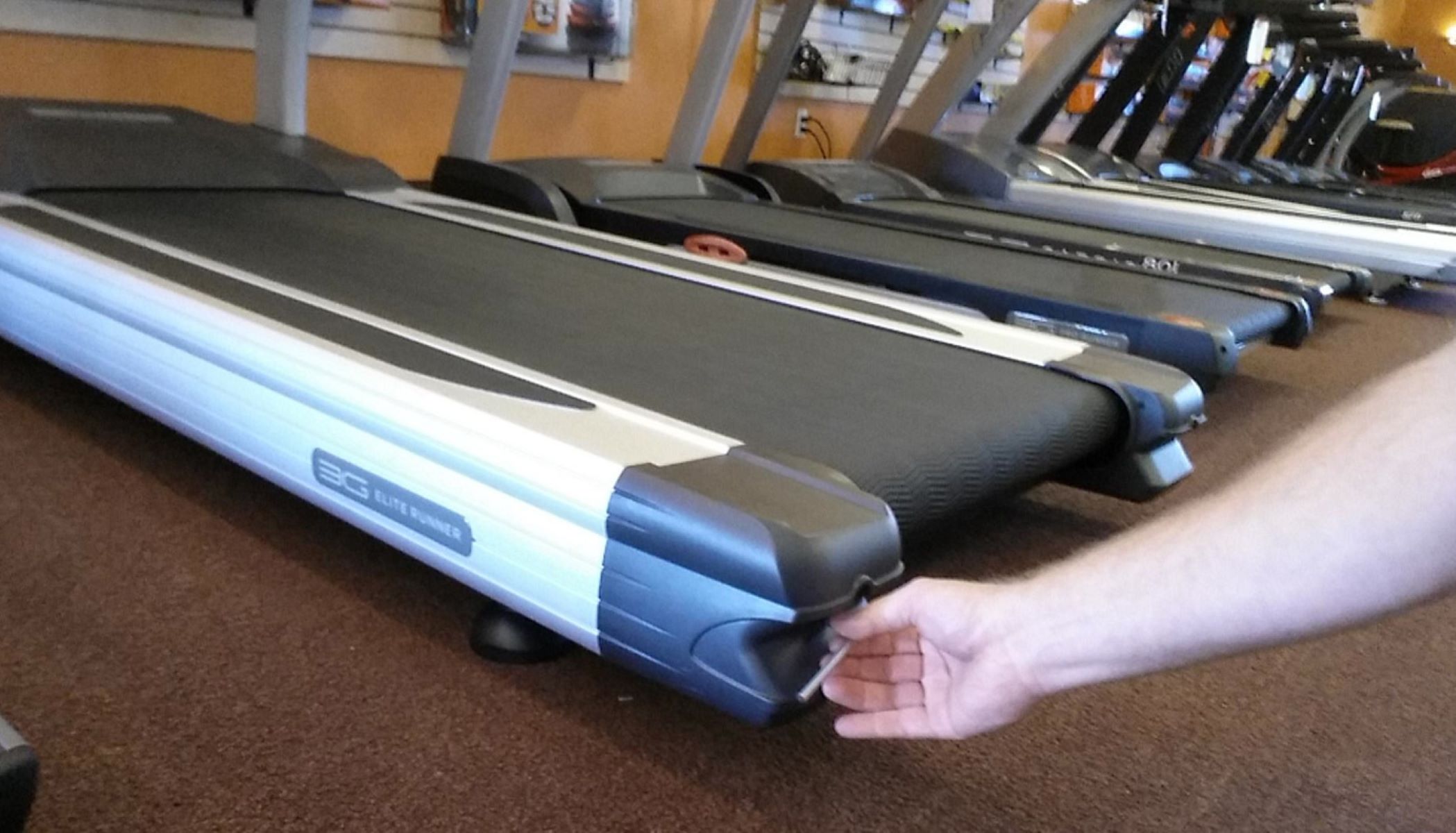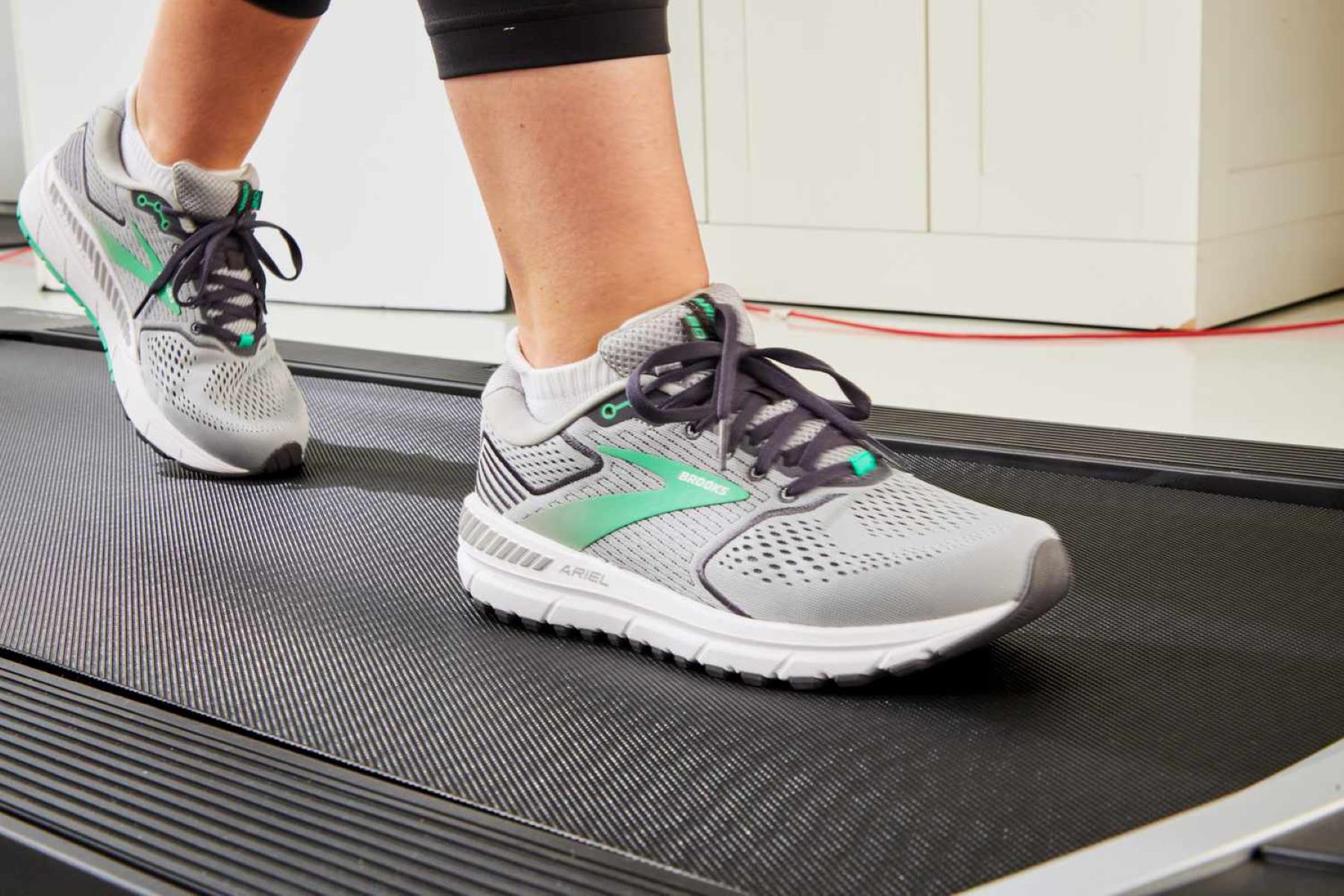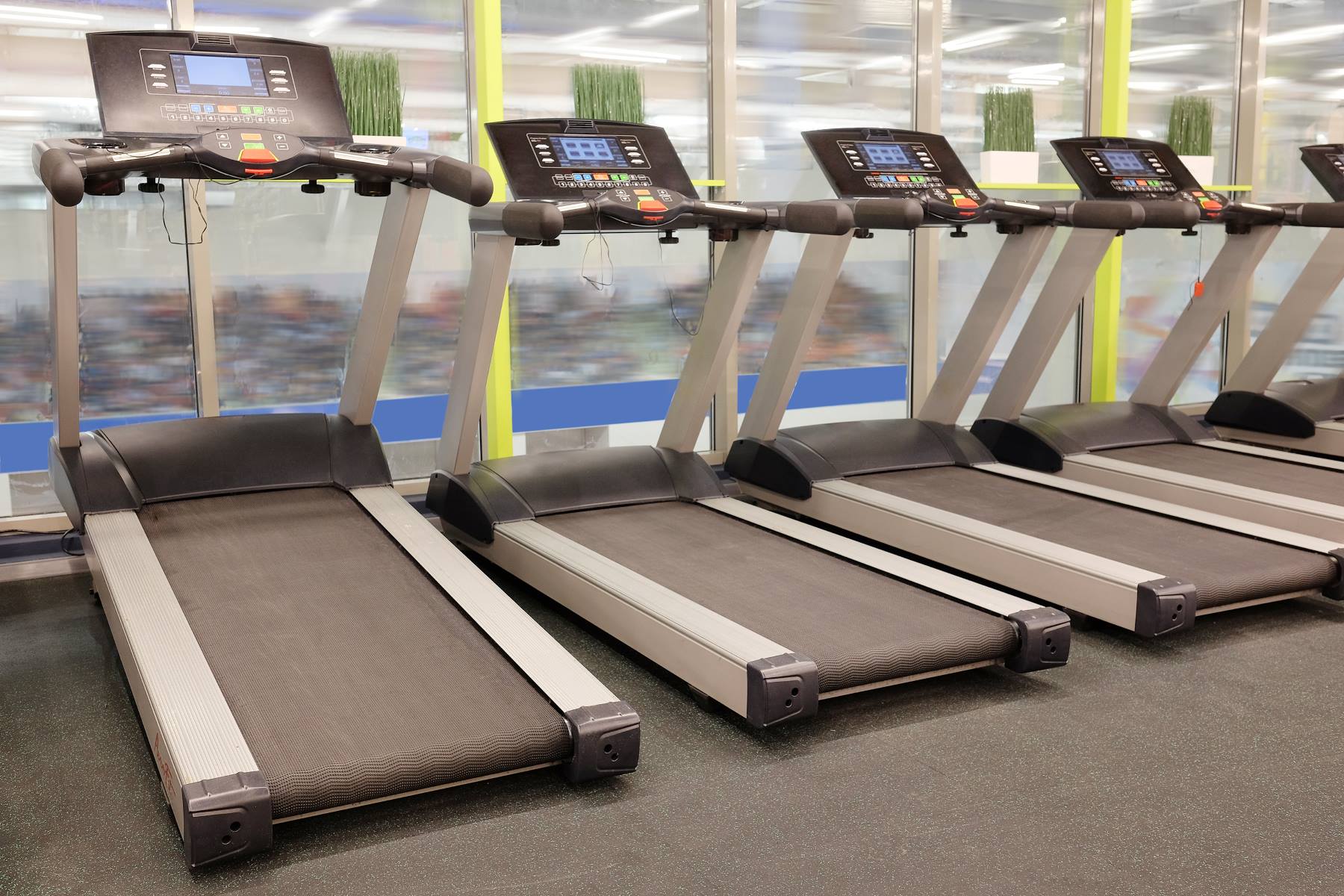Home>Misc>Product Reviews>How Much Is A VR Treadmill
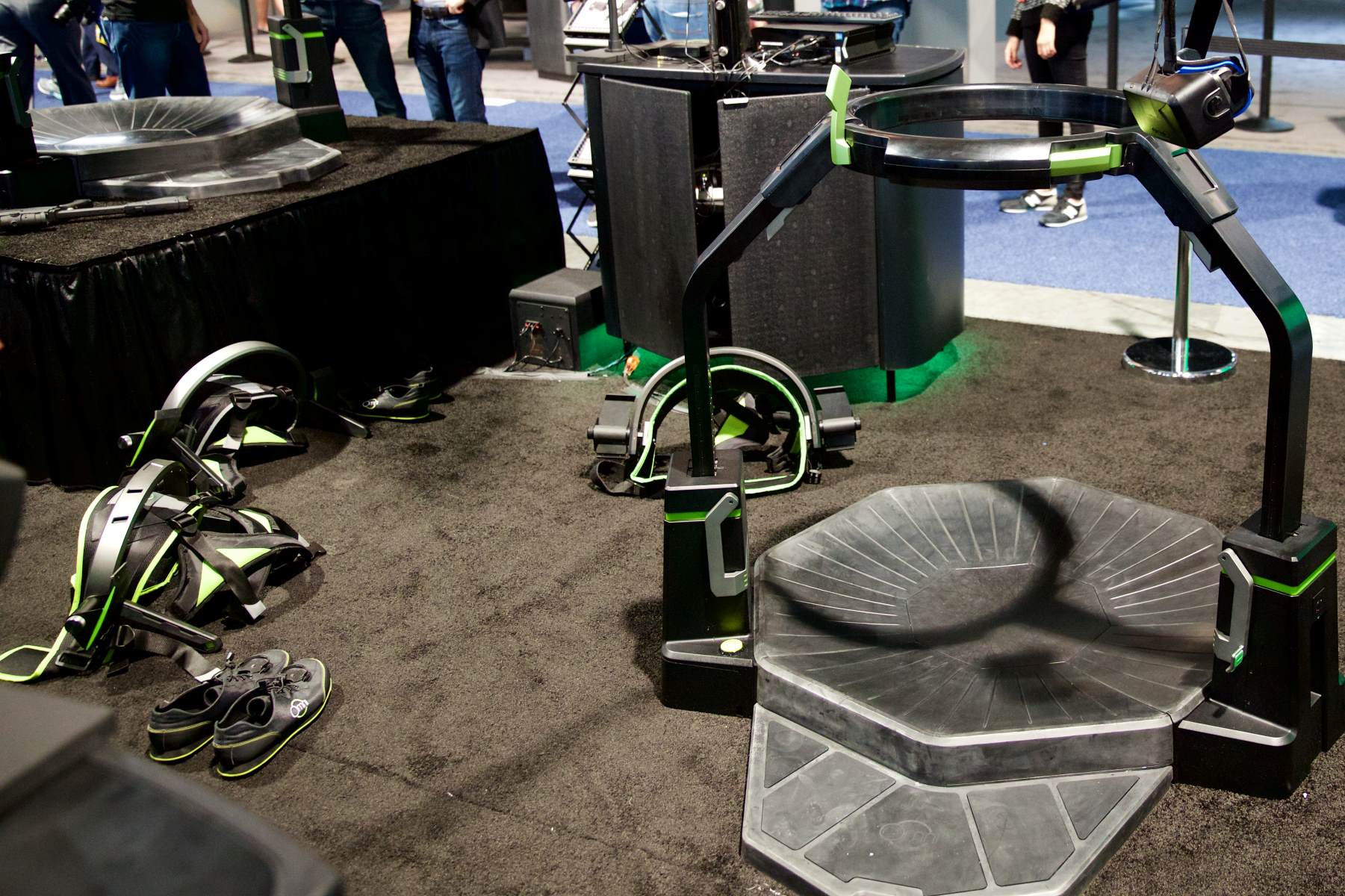

Product Reviews
How Much Is A VR Treadmill
Modified: May 22, 2024
Read the latest product reviews to find out how much a VR treadmill costs and make an informed decision before purchasing.
Introduction
Welcome to the fascinating world of virtual reality gaming! As technology continues to evolve, so does our ability to immerse ourselves in virtual worlds like never before. One of the most exciting advancements in this field is the introduction of VR treadmills. These innovative devices offer a whole new level of physical engagement, allowing players to move freely within virtual environments.
VR treadmills provide a unique and immersive gaming experience by using a combination of virtual reality headsets and motion tracking technology. Whether you’re battling zombies, exploring distant planets, or racing against opponents, VR treadmills allow you to physically walk, run, and even jump, making you feel like you’re truly a part of the virtual world.
This article will delve into the world of VR treadmills, exploring how they work, their benefits, factors to consider when buying one, the price range, popular brands, and even alternative options for virtual reality gaming.
So, if you’re a gaming enthusiast or just intrigued by the idea of stepping into a virtual reality world, join us as we embark on this exhilarating journey into the world of VR treadmills.
What is a VR treadmill?
A VR treadmill, also known as a virtual reality treadmill or an omnidirectional treadmill, is a device designed to enhance the immersion and physicality of virtual reality gaming experiences. Unlike traditional treadmills used for exercise, VR treadmills are specifically designed to allow users to walk, run, and move freely within a virtual environment.
These treadmills typically consist of a large platform or base that users stand on, surrounded by a series of support bars or harnesses to ensure their safety while moving. The platform is equipped with sensors and trackers that detect the user’s movements and translate them into the virtual world. This allows users to control their in-game movements by physically walking or running on the treadmill.
One of the key features of VR treadmills is their ability to provide a truly immersive experience. Unlike other virtual reality setups that rely solely on hand-held controllers or stationary movements, VR treadmills allow users to navigate through virtual environments with their whole bodies. This level of physical engagement enhances the sense of presence and realism, making the gaming experience more immersive and exciting.
While VR treadmills are primarily used for gaming, they also have potential applications in other fields such as training simulations, rehabilitation, and virtual tourism. The ability to simulate realistic movements and interactions within virtual environments opens up a wide range of possibilities for various industries.
It’s important to note that VR treadmills come in different designs and configurations. Some are standalone devices, while others can be integrated with existing virtual reality setups. Additionally, some VR treadmills offer full 360-degree movement, while others may have restrictions on certain directions. It’s essential to consider the specific features and limitations of each VR treadmill model when choosing the right one for your needs.
In the next section, we will explore how VR treadmills work, shedding light on the technology behind these remarkable devices.
How does a VR treadmill work?
A VR treadmill may seem like a complex piece of technology, but its underlying workings are based on a combination of motion tracking sensors and clever design. The objective is to accurately detect and translate a user’s movements into the virtual world to create a seamless and immersive experience.
VR treadmills use a variety of tracking technologies such as optical sensors, inertial measurement units (IMUs), and accelerometers to monitor the user’s position and movement. These sensors are typically embedded in the base of the treadmill platform or attached to the user’s feet, allowing them to detect changes in motion as the user walks, runs, or changes direction.
The data collected by the sensors is then sent to a central processing unit (CPU) that calculates the user’s position and movements in real-time. This information is then used to update the user’s position within the virtual environment.
One of the challenges in VR treadmill design is ensuring that the user’s movements are accurately reflected in the virtual world. To achieve this, VR treadmills employ a technique called redirection. Redirection involves manipulating the user’s visual perception to create the illusion of walking in a straight line while, in reality, they might be moving in a curved or circular path on the treadmill.
This illusion is achieved by dynamically adjusting the motion of the virtual environment to compensate for the user’s real-world movements. For example, if the user turns slightly to the right, the virtual environment may rotate slightly to give the impression of walking straight ahead.
Some VR treadmills also utilize additional accessories such as harnesses, hand controllers, or motion capture devices to enhance the overall experience. These accessories can provide haptic feedback, simulate interactions with virtual objects, or allow for more precise control over the user’s in-game movements.
Despite the advancements in technology, it’s important to note that VR treadmills still have limitations. Users may experience a slight delay between their physical movements and the corresponding movement in the virtual world. Additionally, the size and space requirements of VR treadmills can make them impractical for some users, especially those with limited space or mobility.
In the next section, we will explore the benefits of using a VR treadmill, highlighting why these devices are becoming increasingly popular in the gaming community.
Benefits of using a VR treadmill
Using a VR treadmill offers a wide range of benefits that enhance the gaming experience and provide a more immersive and interactive virtual reality environment. Let’s explore some of the key advantages of incorporating a VR treadmill into your gaming setup:
- Physical Engagement: One of the main benefits of using a VR treadmill is the level of physical engagement it provides. By allowing users to walk, run, and move freely within the virtual environment, VR treadmills promote physical activity while gaming. This can be particularly beneficial for individuals looking to stay active or engage in physical exercise while enjoying their favorite virtual reality games.
- Immersive Experience: VR treadmills take immersion to a whole new level. By using a VR headset and a treadmill, users can explore virtual environments with their whole bodies. This adds a sense of realism, making the user feel like they are truly part of the virtual world. The ability to physically move and interact with the surroundings enhances the overall gaming experience and increases the level of immersion and presence.
- Improved Spatial Awareness: Virtual reality games often require players to navigate large, open spaces or interact with objects and characters in their surroundings. A VR treadmill helps develop and improve spatial awareness and spatial mapping skills. With the ability to physically move and explore, users can better understand the layout of virtual environments and make more informed decisions during gameplay.
- Health and Fitness Benefits: In addition to the physical engagement aspect, using a VR treadmill can have several health and fitness benefits. It provides an opportunity to increase daily physical activity, burn calories, and improve cardiovascular fitness. Some VR treadmill models even offer additional features like heart rate monitoring and workout tracking, making it easier to incorporate virtual reality gaming into a fitness routine.
- Social Interaction: Many VR treadmills offer multiplayer functionality, allowing friends and family members to join in the virtual reality gaming experience together. This fosters social interaction and adds a new dimension to gaming sessions, making them more enjoyable and memorable. Virtual reality can become a shared experience, strengthening bonds and creating lasting memories.
By offering physical engagement, immersion, spatial awareness, and health and fitness benefits, VR treadmills are revolutionizing the gaming industry. They provide a unique and captivating way to enjoy virtual reality experiences while promoting active and healthy gaming habits.
Next, let’s delve into the factors you should consider when purchasing a VR treadmill to ensure you make the right choice for your gaming needs.
Factors to consider when buying a VR treadmill
When purchasing a VR treadmill, there are several important factors to consider to ensure that you choose the right one that meets your needs and preferences. Below are some key factors to keep in mind:
- Space Requirements: VR treadmills typically require a significant amount of space, both for the treadmill itself and for users to move around comfortably. Before buying a VR treadmill, consider the available space in your gaming area and ensure that it can accommodate the dimensions and movement range of the treadmill.
- Compatibility: Check the compatibility of the VR treadmill with your existing virtual reality setup. Some VR treadmills are designed to work seamlessly with specific VR headsets or gaming platforms, while others offer more flexibility in terms of compatibility. Ensure that the treadmill you choose is compatible with your preferred VR headset or gaming system.
- Movement Range: Different VR treadmills offer varying degrees of movement range. Some models allow full 360-degree movement, while others may have restrictions on certain directions. Consider the type of movement required by the games you plan to play and choose a treadmill that can accommodate your desired range of motion.
- Comfort and Safety: Since you will be spending a considerable amount of time on the VR treadmill, it’s important to consider comfort and safety features. Look for treadmills with cushioned surfaces, adjustable harnesses or support bars, and adequate safety measures to prevent accidents and injuries during intense gaming sessions.
- Reviews and Ratings: Before making a purchase, take the time to read reviews and check ratings for different VR treadmill models. Pay attention to user feedback regarding build quality, performance, durability, and overall satisfaction. This will give you valuable insights into the pros and cons of each treadmill and help you make an informed decision.
- Price Range: VR treadmills vary significantly in price, ranging from affordable options to more high-end and advanced models. Consider your budget and determine the features and capabilities that are most important to you. It’s worth investing in a quality VR treadmill that aligns with your long-term gaming goals and provides a satisfying user experience.
By considering these factors, you can narrow down your options and choose a VR treadmill that suits your gaming preferences, available space, and budget. It’s essential to make an informed decision to ensure you get the most out of your virtual reality gaming experience.
In the next section, we will explore the price range of VR treadmills, giving you an idea of what to expect when budgeting for your purchase.
Price Range of VR Treadmills
The price range of VR treadmills can vary significantly depending on the brand, features, and quality of the product. It’s important to establish a budget and consider your specific gaming needs when exploring the options available. Below is a general overview of the price ranges you can expect when looking for a VR treadmill:
- Entry-Level: Entry-level VR treadmills are typically priced between $200 and $500. These budget-friendly options may have more limited features and capabilities, but they still offer a decent virtual reality gaming experience. They are a good choice for beginners or those with a tighter budget.
- Mid-Range: Mid-range VR treadmills generally fall between $500 and $1,500. These treadmills often offer a balance between price and features, providing a more immersive experience and better build quality compared to entry-level models. They are suitable for gamers who want more advanced features without breaking the bank.
- High-End: High-end VR treadmills can range from $1,500 to $4,000 or more. These top-of-the-line models often include advanced features such as full body tracking, high-quality sensors, and enhanced user comfort. They are designed for enthusiasts who are willing to invest in a premium VR gaming experience.
- Professional/Commercial: Some VR treadmills designed for professional or commercial use can be significantly more expensive, reaching prices upwards of $10,000 or more. These treadmills are typically built to withstand heavy use and offer advanced features for specialized applications such as training simulations or arcades.
It’s important to note that price alone should not be the sole determining factor when choosing a VR treadmill. Consider the features, build quality, customer reviews, and overall value for money. It’s recommended to do thorough research and compare different options within your budget range.
Additionally, keep in mind that the cost of a VR treadmill is just one component of the overall virtual reality gaming setup. You may also need to consider the cost of a VR headset, controllers, and any additional accessories required for a complete and immersive gaming experience. Budget accordingly to ensure you have all the necessary components to enjoy your VR treadmill to the fullest.
In the next section, we will explore popular brands and models of VR treadmills, giving you a glimpse into some of the options available on the market.
Popular VR Treadmill Brands and Models
There are several reputable brands that offer VR treadmills, each with their own unique features and designs. Here are a few popular VR treadmill brands and models to consider when looking for the perfect fit for your gaming setup:
- Virtuix Omni: The Virtuix Omni is one of the pioneering brands in the VR treadmill market. Their flagship model, the Omni One, offers a 360-degree movement range, adjustable support harness, and intuitive control system. It provides a highly immersive gaming experience for users.
- Kat Walk C: The Kat Walk C is another standout VR treadmill known for its advanced design and technology. It features a compact and ergonomic structure, 360-degree movement, and customizable harness options. The Kat Walk C offers precise tracking and a comfortable gaming experience.
- Infinadeck: Infinadeck is a leading VR treadmill brand that offers a unique omnidirectional treadmill experience. Their model provides a smooth and fluid movement, allowing users to walk or run in any direction. Infinadeck’s design ensures minimal strain on the body, making it suitable for extended gaming sessions.
- Cyberith Virtualizer: The Cyberith Virtualizer is a highly regarded VR treadmill known for its innovative design. It features a low-friction surface, 360-degree movement, and a harness for stability and safety. The Virtualizer allows users to crouch, jump, and even lay down, providing a greater range of motion within the virtual environment.
- Wizdish ROVR: The Wizdish ROVR offers a unique solution for virtual reality locomotion. Rather than a traditional treadmill, it features a dish-like platform that users stand on. By sliding their feet along the dish’s surface, users can move in any direction. The Wizdish ROVR is known for its simplicity and affordability.
These are just a few examples of popular VR treadmill brands and models available on the market. When choosing a VR treadmill, consider factors such as price, features, user reviews, and overall compatibility with your gaming setup. Remember to do thorough research and explore different options to find the VR treadmill that best aligns with your gaming preferences and requirements.
In the next section, we will explore alternative options for virtual reality gaming for those who may not have access to or prefer not to use a VR treadmill.
Alternatives to VR Treadmills for Virtual Reality Gaming
While VR treadmills offer an immersive and interactive gaming experience, they are not the only option for enjoying virtual reality games. If a VR treadmill is not feasible or desirable for you, there are alternative methods of locomotion that can still enhance your virtual reality gaming experience. Here are a few alternatives to consider:
- Room-Scale VR: Many virtual reality systems, such as the HTC Vive and Oculus Quest, provide room-scale VR experiences. With room-scale VR, you have the freedom to physically move around within a designated play area. This allows you to walk, duck, and dodge objects in the virtual environment without needing a treadmill.
- VR Controllers: VR controllers, such as handheld motion controllers, can simulate hand and arm movements in virtual reality. These controllers can be used to navigate through virtual environments by using thumbsticks or touchpad controls. While not as physically immersive as a treadmill, they still offer a level of interaction and engagement within the virtual world.
- Trackpads and Thumbsticks: Some VR games utilize trackpads or thumbsticks on VR headsets or handheld controllers for movement. By sliding your finger or thumb across the trackpad or joystick, you can “teleport” or move through the virtual environment without physically walking. This method can provide a seamless and intuitive way to navigate virtual spaces.
- Seated VR: If space is limited or physical limitations prevent you from using a VR treadmill, seated VR can still offer an enjoyable gaming experience. Many virtual reality games are designed to be played while seated, allowing you to use a gamepad or motion controllers to interact within the virtual world. This alternative ensures accessibility and comfort for all users.
- VR Motion Platforms: VR motion platforms, also known as motion simulator chairs, can provide a more dynamic and immersive gaming experience. These platforms simulate movements such as tilting, rocking, and vibrating, enhancing the sensation of being in the virtual world. While they don’t replicate walking or running movements, they can add an extra layer of realism to your gaming experience.
These alternatives offer different levels of immersion and interaction, allowing you to enjoy virtual reality gaming even without a VR treadmill. Consider your preferences, space limitations, and budget when choosing the best alternative for your gaming setup.
Now that we have explored the various alternatives to VR treadmills, let’s wrap up our discussion on VR gaming in the next section.
Conclusion
Virtual reality treadmills offer an incredible opportunity to take your gaming experience to new heights. By allowing users to physically move within virtual environments, VR treadmills provide a level of immersion and interactivity that traditional gaming setups cannot match. The physical engagement, immersive experience, improved spatial awareness, and health benefits make VR treadmills an appealing choice for gamers.
When considering a VR treadmill, it’s essential to factor in aspects such as space requirements, compatibility, movement range, comfort, safety, and price. By carefully considering these factors, you can select a VR treadmill that suits your needs and budget.
However, VR treadmills may not be suitable or accessible for everyone. Fortunately, there are alternative options available such as room-scale VR, VR controllers, trackpads and thumbsticks, seated VR, and VR motion platforms. These alternatives provide varying levels of immersion and interaction, catering to different preferences and limitations.
Whether you choose a VR treadmill or an alternative method, virtual reality gaming offers an exciting and captivating experience. The ability to step into virtual worlds and engage physically with the environment opens up endless possibilities for gaming enthusiasts.
So, whether you’re battling zombies, exploring distant galaxies, or competing with friends in virtual races, a VR treadmill or alternative option can transport you into a world of limitless adventure and excitement.
Now it’s time to embark on your virtual reality journey and discover the wonders that await you!



